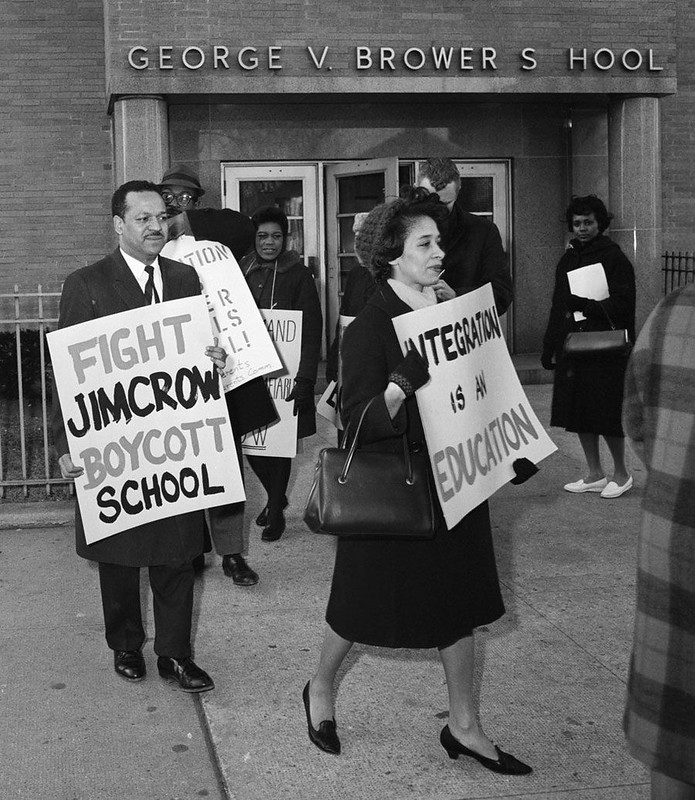- About
- Topics
- Picks
- Audio
- Story
- In-Depth
- Opinion
- News
- Donate
- Signup for our newsletterOur Editors' Best Picks.Send
Read, Debate: Engage.
| March 03, 2020 | |
|---|---|
| topic: | Racism |
| tags: | #USA, #Alabama, #segregation, #racial justice, #Change.org, #petition, #activism |
| located: | USA |
| by: | Yair Oded |
The issue seems to be getting worse, in fact, as communities around the U.S., and especially in the South, utilise loopholes and and mount campaigns to separate white students from black and Hispanic ones.
Particular attention has been paid to the situation in Alabama, where the State Constitution, to this day, contains a clause that mandates racial segregation of schools in the state.
A Change.org petition was launched in order to pressure the Alabama State House and Senate to remove this racist, archaic language from the State Constitution. The petition was started by the Equal Justice Initiative - an Alabama-based non profit organisation working on issues of criminal justice reform, racial justice, and public education.
The Alabama State Constitution was written in 1901 with the primary intent of preserving white supremacy in the state, and limiting the state government’s ability to promote racial integration and equality.
The constitution had since been amended more than 800 times, and some of its racist clauses, including the one banning interracial marriage, had been eliminated. Yet, the section referring to racial segregation of schools remains as a blemish on the document till this day, and all attempts to remove it have thus far failed.
Section number 256 reads in its conclusion that, “Separate schools shall be provided for white and colored children, and no child of either race shall be permitted to attend a school of the other race.”
Those who oppose the removal of the section contend that since the Supreme Court decision overrides state law, the sentence is effectively meaningless and therefore any attempts to change it are futile. But a great many in the state insist that this language must be removed as it, apart from being egregiously offensive, emboldens those who push for segregation of schools in the state.
Alabama has a long history of resisting school integration. As stated by the Equal Justice Initiative in their petition, “After the United States Supreme Court declared racially segregated public schools unconstitutional in Brown v. Board of Education, Alabama's legislature enacted an ‘interposition’ resolution that denounced Brown as an ‘illegal encroachment’ on state’s rights and declared it ‘null, void and of no effect.’ Resistance to integration dominated state politics for two decades after Brown.”
When the Supreme Court delivered another decision ordering Southern states to immediately desegregate their schools, white parents across the South, including in Alabama, resorted to expanding an already existing network of white-only private schools. While some of these “segregation academies” have since integrated (primarily in order to qualify for certain grants and funding), many remain segregated to this day.
Other than sending their kids to private school, white Alabamian parents have also pushed to ‘secede’ from school districts with a black or Hispanic majority and establish their own districts. This phenomenon, known as ‘splinter’ school districts, can be seen across the country, but is particularly prominent in the South. Proponents of district secession argue that they simply want to retain more local ‘control’ over their education system; yet it is clear that such moves contain a racial and economic motive.
A 2019 research on school secession states that, “Recent Southern secession reflect a narrowing conception of what is ‘public’ about public education as newly created districts seek to preserve relative racial and economic advantages for more homogeneous White areas,” adding that, “Our findings show that after district secession, students are increasingly being sorted into different school districts by race.”
According to the research, while some attempts of parents to split off from school districts fail, many are approved by local courts - which encourages parents from other counties and states to follow suit. The research also finds that school secession is one of the primary forces behind the increased segregation of schools in America today.
The first attempt to remove the racist language from section 256 of the Alabama State Constitution took place in 2004, and was led by then-Governor Bob Riley (R). The amendment proposal, which won bi-partisan support, failed by 2,000 votes. A subsequent attempt to remove the clause in 2012 had failed as well.
Among those leading the charge against the removal of the section was Roy Moore, a conservative politician who then served on the state supreme court. Moore and his supporters railed against an aspect of the amendment that sought to also remove a clause from 1956 which states that Alabamians have no constitutional “right to education or training at public expense.” Moore argued that removing this clause, which was added to the constitution in order to resist school integration, would serve as a loophole for “liberals” to significantly raise taxes on state residents.
Some in Alabama maintain that Moore’s motives were ideological and political, not racist. Yet it would be cynical and dangerous to ignore the fact that resisting the elimination of such language from the State Constitution strengthens those who seek to perpetuate racial segregation of schools.
Amending the Constitution of Alabama could have a reverberating effect and draw further attention to the issue of school segregation, which plagues communities across the country.
Please consider signing the petition and send a clear message to lawmakers that school segregation has no place in today’s America.
By copying the embed code below, you agree to adhere to our republishing guidelines.
